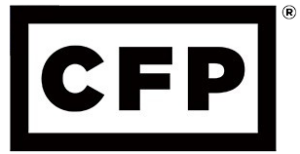1 – Putting a child’s saving exclusively into 529 Plans.
Why its recommended: 529 Plan are considered a parent’s assets which is favorable when applying for financial aid. In addition, capital gains are tax-free when used for qualified distributions related to education. Contributions may have a small taxable deduction depending on your state and plan.
Why you should reconsider: Is it any surprise that students lack basic financial literacy when they’re not given the opportunity to manage a basic account? On top of that I can’t tell you how many times I’ve been told by parents that they want their children to focus on school work rather than pursue a part-time job. It’s all well intentioned, but insulates our children from understanding finances. And really… aren’t we sending our kids to college so they’re best equipped to make as much money as possible? Wouldn’t you want the opportunity to help them earn/save/grow while they’re in high school rather than gamble on what happens when they receive a post-college salary offer of $60k+/year with zero experience in managing money?
Solution: 529s are certainly a smart way to plan for college, but don’t overlook the importance of them managing their own checking and investment account (ie – UTMA or Roth if they have a part-time job). Set a few hurdles for them. Maybe it’s $X amount toward their first car or laptop by year end. See how they plan to grow a $500 into $1,000. Is it by working more, investing it, a mix of both? If they blow it off entirely, feel lucky that you can address it before credit cards come into play.
2 – Putting all your surplus cash into retirement account.
Why its recommended: 401(k)s and IRAs allow for tax-deferred growth, which gives you the best opportunity to maximize every dollar saved and reduce your taxable income in the contribution year. Employer plans also often come with contribution matches, which is money you don’t want to leave on the table.
Why you should reconsider: Money contributed to these plans are stuck there until age 59.5. Unless you have a qualifying hardship, you won’t be able to touch those savings without incurring a penalty. Some plans offer loans, but those have their caveats. I see too many people stuff their employer plans well beyond the incentive of receiving a matching contribution without leaving any savings toward shorter-term goals. In addition, all good things come to an end. No later than age 72 you’ll be required to take annual distributions which will be taxed as ordinary income rather than capital gains. This can really inflate your taxable income in retirement years pushing you into high marginal and IRMAA tax brackets.
Solution: Strike a balance of retirement and brokerage accounts that allows you to be strategic about minimizing taxes now but not so much so that you’re practically illiquid. You’ll be especially happy in retirement years if you have brokerage accounts that can be tapped for margin or used to supplement income so you can stay under the wire for unfavorable tax brackets.




